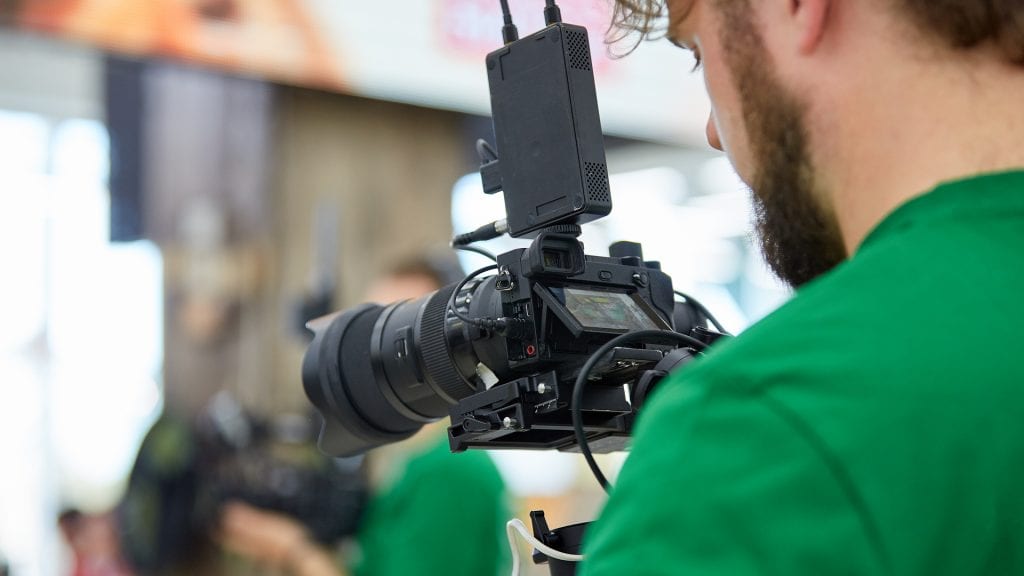How to Create Behind-The-Scenes Video Content (BTS) – Tips You Wish You Knew Earlier
Filming behind the scenes video content is an important part of your marketing strategy. Edit faster by using transcripts of your footage.

A recent survey by Livestream in collaboration with the NewYork Magazine concluded that 87% of people will watch a video if it includes behind the scenes content. So what’s the intrinsic value behind BTS content that backs these statistics?
BTS videos cover various stages of the journey, starting with the idea, planning, shooting, equipment used to bring together the different pieces of the puzzle. Viewers relate more to the uniqueness and authenticity of BTS content, which is the foundation of increased viewership and brand loyalty.
In this post, discuss how to create BTS video content and why this content is important.
What is behind the scenes content?
Behind-the-scenes content is not entirely new. You may have noticed extra footage on movies or your favorite documentary titled “never before seen videos”, or” the making of.” Behind-the-scenes is raw or unedited footage about the inner workings of your brand. It showcases the brand’s management, team, culture, or the daily workings in an organization.
Behind-the-scenes content helps you connect with your audience in a way that’s not possible through scripted content. Sharing such content regularly helps humanize your brand. It also shows that your organization is not static and invites your clients to grow with you.
How to make good behind-the-scenes videos
The kind of behind-the-scenes content you share depends on whether you are selling a product, a service, or promoting an event.
Below are a few tips to help you create engaging content:
Give your audience a glimpse of what happens around you daily
Often, consumers are completely detached from the process of making a product or service. They only get to see the end product.
When it comes to showing them what happens from day to day, you do not have to script what stories your team will tell. Rather, start documenting daily conversations and processes either in video or even in audio formats. With time, you will identify ideas, patterns, and trends that form the basis of what you can share with your audience.
“A day in the life of” videos gives your audience insights into the challenges and efforts that go into making the product or service.

Showcase your projects’ planning process
If you are planning on launching a product, service, or hosting an event, take your audience along with you. Share the details of what happens during the planning or even the production process. Your audience will enjoy learning the intricate details of what goes into pulling off a successful product or service launch. It also adds value by enhancing their experience with your brand.
Interview the team
You’ve probably heard of the importance of connecting with your audience when carrying out a marketing campaign. Interviewing the team puts a face behind the production, which helps create a brand identity that your audience can relate to.
In essence, your brand’s image can and should be what identifies you. However, without a story, you risk appearing impersonal or even cold. Your audience cannot connect with your logo the same way they can with humans. Consumers are also more likely to trust humans more than they can trust a company.
Tell your story
We are all hardwired to respond to a compelling story. According to Forbes, telling a captivating story is the most effective way of forging personal bonds, capturing people’s attention, and baking the intended information into your audience’s memory. This phenomenon explains why more brands are turning to storytelling to build brand awareness and driving conversions.

Your brand’s story may include a series of events that led to your organization’s inception, mission, vision, and the values that drive you. Storytelling works as it taps into your audience’s beliefs, interests, and attitudes. It is also an effective way of tapping into their emotion. While at it, always remember to transcribe your audio into text.
Editing and transcription
Once you have filmed everything, you will want to choose the best clips for your BTS video. The editing process allows you to include images and music that will make your content unique. You may want to consider making the video short, with the ideal length being between one and four minutes.
When making a BTS video for a documentary, interview, or non-narrative footage of people talking, you should consider requesting quality transcription services. Transcription helps improve your videos’ accessibility, enhances understanding, improves user experience, and caters to your non-hearing audience. Adding captions will also make your BTS video stand out.
Why is sharing behind the scenes content important?
Not every business is comfortable sharing its behind-the-scenes content online. Most of those who are hesitant to do so fear that it will make them look less professional or deemed to be oversharing.
Sharing the making of content helps create brand value, which is the difference between a personable organization and a faceless brand. Consumers are more likely to purchase from the former as it is more appealing, approachable, and friendly. Over time, this creates trust and loyalty between you and your audience.
The takeaway
The future of brand engagement is firmly rooted in storytelling. The market today identifies more with the process than the actual result. BTS content underscores this fact with its raw and “unedited” presentation of the story behind your video. Complement your BTS content with our transcription and captioning solutions to make it more accessible and relatable.















